The Ford Fiesta is a popular car among car enthusiasts and everyday drivers alike. However, one common problem that Fiesta owners may encounter is the Ford Fiesta Not Starting.
There are numerous reasons why a Fiesta may not start, ranging from battery issues to fuel system problems.
As a helpful car enthusiast, we will explore some of the common causes of a Ford Fiesta not starting and suggest some possible solutions to get your Fiesta up and running again.
Table of contents
Why is my Ford Fiesta not starting?

If your Ford Fiesta is not starting, there could be several reasons why.
- One possibility is a dead battery, which can prevent the car from starting altogether.
- Check if the headlights or interior lights turn on when you turn the key in the ignition. If they don’t, the battery may need to be charged or replaced.
- Another possible culprit could be a faulty starter motor, which can prevent the engine from turning over.
- Listen for a clicking noise when you turn the key; if the noise is present, but the engine doesn’t start, the starter motor may need to be replaced.
- Additionally, a clogged fuel filter or a malfunctioning fuel pump can also prevent the car from starting.
If you have tried all of these solutions and your Ford Fiesta still won’t start, it may be time to take it to a mechanic for further diagnosis and repair.
What Are Some Possible Causes of Ford Fiesta Not Starting?
| Issue | Symptoms | Possible Fix |
|---|---|---|
| Dead battery | The car won’t crank or turn over. | Jumpstart the car or replace the battery. |
| Corroded battery terminals | The battery terminals are covered in rust or corrosion. | Clean the battery terminals with a wire brush and apply a thin coat of dielectric grease. |
| Loose battery cables | The battery cables are loose or disconnected. | Tighten the battery cables or reconnect them. |
| Bad starter motor | The starter motor doesn’t engage or makes a clicking noise. | Replace the starter motor. |
| Bad starter relay | The starter relay doesn’t click when you turn the key. | Replace the starter relay. |
| Faulty starter solenoid | The starter solenoid doesn’t engage when you turn the key. | Replace the starter solenoid. |
| Bad alternator | The alternator isn’t charging the battery. | Replace the alternator. |
| Worn spark plugs | The spark plugs are fouled or damaged. | Replace the spark plugs. |
| Failed fuel pump | The fuel pump isn’t working. | Replace the fuel pump. |
| Clogged air filter | The air filter is clogged with dirt or debris. | Replace the air filter. |
| Clogged fuel filter | The fuel filter is clogged with dirt or debris. | Replace the fuel filter. |
| Blown fuse | A fuse has blown, preventing power from reaching a critical component. | Replace the blown fuse. |
| Engine failure | The engine has seized or is otherwise damaged. | Tow the car to a mechanic for further diagnosis and repair. |
| Immobilizer system | The immobilizer system is preventing the car from starting. | Enter the correct security code to disable the immobilizer system. |
1. Dead battery:

The most common reason for a car not starting is a dead battery. Check the battery connections and look for signs of corrosion or damage to the battery. If the battery is old or has been drained, it may need to be charged or replaced.
You can try jump-starting the car with another vehicle or a jump starter pack. Once the car is running, leave it on for a while to recharge the battery.
If the battery is still not holding a charge, it may need to be replaced. It is important to note that even if the lights turn on, the battery may not have enough power to start the engine.
Therefore, it is essential to check the battery’s voltage with a multimeter to ensure that it has enough power to start the engine.
2. Alternator issues:
The alternator is responsible for charging the battery while the car is running. If the alternator is not functioning correctly, the battery will not receive the necessary charge, and the car may eventually not start.
Signs of an alternator problem include dimming headlights or dashboard lights, a battery warning light appearing on the dashboard, or a strange noise coming from the alternator.
If you suspect an alternator issue, it’s best to have it checked and repaired by a mechanic before the battery dies and leaves you stranded.
3. Faulty starter:
If you don’t hear any noise when turning the key, it could mean that the starter is completely dead.
A quick way to test if the starter is the issue is to try jump-starting the car. If it starts with a jump, then the battery is not the issue, and it’s likely the starter that needs to be replaced.
It’s essential to have a faulty starter motor replaced as soon as possible because it can cause further damage to the engine if left unchecked. A professional mechanic can diagnose and repair a faulty starter motor.
4. Clogged fuel filter:
If the engine cranks but doesn’t start, a clogged fuel filter could be the issue. Over time, the fuel filter can become clogged with dirt and debris, preventing fuel from reaching the engine.
Symptoms of a clogged fuel filter include a lack of power, poor acceleration, and engine misfires. If you suspect a clogged fuel filter, it’s essential to have it replaced by a mechanic.
Neglecting to replace a clogged fuel filter can cause further damage to the engine and lead to costly repairs down the road.
5. Bad fuel pump:
The fuel pump is responsible for delivering fuel to the engine. If it fails, the ford fiesta car will not start. A bad fuel pump can be caused by a variety of factors, including wear and tear, electrical issues, or a clogged fuel filter.
Symptoms of a bad fuel pump include a sputtering engine, difficulty starting the car, or a loss of power while driving. If you suspect a bad fuel pump, it’s essential to have it checked and replaced by a professional mechanic.
Neglecting to replace a bad fuel pump can lead to engine damage and expensive repairs down the road.
6. Ignition switch failure:
Another possible cause of a Ford Fiesta not starting is ignition switch failure. The ignition switch is responsible for sending power to the starter motor and other components necessary to start the engine.
If the ignition switch fails, the car will not start. Signs of an ignition switch problem include the engine cranking but not starting, the engine stalling while driving, or the key getting stuck in the ignition.
If you suspect an ignition switch issue, it’s best to have it diagnosed and repaired by a mechanic as soon as possible to prevent further damage to the car’s electrical system.
7. Faulty spark plugs:
Faulty spark plugs can also cause a Ford Fiesta not to start. Spark plugs ignite the fuel in the engine, and if they are worn or dirty, the engine will not start.
Signs of faulty spark plugs include the engine cranking but not starting, misfiring, and a decrease in fuel efficiency.
It’s essential to have the spark plugs checked and replaced regularly to prevent this issue and keep your Ford Fiesta running smoothly.
Neglecting to replace faulty spark plugs can lead to engine damage and expensive repairs down the road.
8. Malfunctioning fuel injectors:
Malfunctioning fuel injectors can cause a variety of issues with your Ford Fiesta, including difficulty starting the engine or a decrease in fuel efficiency.
Clogged fuel injectors can prevent fuel from reaching the engine, leading to poor performance or stalling.
Signs of malfunctioning fuel injectors include rough idling, misfires, or a decrease in power while driving. If you suspect a problem with your fuel injectors, it’s best to have them checked and cleaned or replaced by a mechanic.
Regular maintenance, including fuel injection system inspections and cleaning, can help prevent this issue and keep your Ford Fiesta running smoothly.
Neglecting to maintain your fuel injectors can lead to engine damage and expensive repairs down the road.
9. Broken timing belt:
The timing belt is a vital component of the engine, and if it breaks, it can cause significant damage to the engine.
The timing belt keeps the engine’s valves and pistons in sync, and if it slips or breaks, the pistons can collide with the valves, causing severe damage to the engine.
Signs of a broken timing belt include a sudden loss of power while driving, engine misfires, and a ticking noise coming from the engine.
Regular maintenance, including timing belt replacement, can help prevent this issue and keep your Ford Fiesta running smoothly.
If you suspect a broken timing belt, it’s essential to have it checked and repaired by a professional mechanic as soon as possible to prevent further damage to the engine.
10. Faulty crankshaft position sensor:
The crankshaft position sensor is a crucial component in the ignition system of the Ford Fiesta. This sensor is responsible for measuring the position and speed of the crankshaft and relaying that information to the car’s computer.
The computer then uses this information to determine when to fire the spark plugs and start the engine. If the crankshaft position sensor fails, the computer won’t receive the necessary signals, and the engine won’t start.
Signs of a faulty crankshaft position sensor include difficulty starting the engine, misfires, and stalling. If you suspect a problem with your crankshaft position sensor, it’s essential to have it checked and replaced by a professional mechanic.
Regular maintenance, including sensor inspections and replacement if necessary, can help prevent this issue and keep your Ford Fiesta running smoothly.
Neglecting to replace a faulty crankshaft position sensor can lead to engine damage and expensive repairs down the road.
11. Malfunctioning camshaft position sensor:
The camshaft position sensor is responsible for measuring the position and speed of the camshaft and relaying that information to the car’s computer.
The computer then uses this information to determine when to inject fuel into the engine.
If the camshaft position sensor fails, the computer won’t receive the necessary signals, and the engine won’t start. Signs of a faulty camshaft position sensor include difficulty starting the engine, misfires, and stalling.
If you suspect a problem with your camshaft position sensor, it’s essential to have it checked and replaced by a professional mechanic.
12. Low fuel level:
It’s important to keep an eye on the fuel level in your Ford Fiesta to prevent it from running too low. If the fuel level gets too low, the engine may not start.
This can happen because the fuel pump may not be able to pull enough fuel from the tank to start the engine.
In addition to preventing the engine from starting, running on a low fuel level can also cause damage to the fuel pump and fuel system components.
To avoid this issue, it’s recommended that you keep your Ford Fiesta’s fuel level above a quarter tank at all times. This will help prevent the fuel pump from running dry and ensure that your car starts smoothly every time.
13. Bad oxygen sensor:
The oxygen sensor plays a crucial role in ensuring that the air/fuel mixture in the engine is optimal for combustion.
It monitors the amount of oxygen in the exhaust gases and sends this information to the car’s computer, which adjusts the air/fuel ratio accordingly. If the oxygen sensor fails, the engine may not start, or it may run poorly.
Signs of a bad oxygen sensor include a decrease in fuel efficiency, engine misfires, and a decrease in power. It’s crucial to have the oxygen sensor checked and replaced regularly to prevent this issue and keep your Ford Fiesta running smoothly.
Neglecting to replace a faulty oxygen sensor can lead to engine damage and expensive repairs down the road.
Regular maintenance, including oxygen sensor replacement, can help prevent this issue and ensure that your Ford Fiesta starts and runs smoothly every time.
14. Damaged wiring:

The wiring in your Ford Fiesta is essential for ensuring that all the electrical components, including the starter motor and ignition system, work correctly.
If the wiring is damaged or corroded, it can prevent the car’s electrical system from functioning correctly, causing the engine not to start. Signs of damaged wiring include electrical shorts, blown fuses, and a decrease in battery power.
It’s essential to have the wiring checked and repaired by a mechanic as soon as possible to prevent further damage to the car’s electrical system.
15. ECM failure:
The engine control module (ECM) is responsible for regulating various systems in your Ford Fiesta, including the fuel injection, ignition, and emissions control systems. If the ECM fails, the car may not start or may run poorly.
Signs of ECM failure include stalling, reduced power, and difficulty starting the engine. It’s essential to have the ECM checked and replaced by a qualified mechanic if necessary.
By staying on top of regular maintenance, you can help ensure that your Ford Fiesta starts and runs smoothly every time.
16. Failed mass air flow sensor:
The mass air flow sensor measures the amount of air entering the engine. If it fails, the engine may not start or run poorly.
The mass air flow sensor is a critical component that measures the amount of air entering the engine. It sends this information to the car’s computer, which adjusts the air/fuel ratio accordingly.
If the mass air flow sensor fails, the engine may not start or may run poorly. Signs of a failed mass air flow sensor include reduced power, engine misfires, and decreased fuel efficiency.
It’s crucial to have the mass air flow sensor checked and replaced by a qualified mechanic if necessary.
How can I troubleshoot the problem?
If you are experiencing problems with your Ford Fiesta not starting, there are a few troubleshooting steps you can take before taking it to a mechanic.
- First, check the battery connections and look for signs of corrosion or damage. If the battery is dead, try jump-starting it or replacing it altogether.
- If the battery is fine but the engine still won’t turn over, check the fuel system for clogs or malfunctions.
- You can also try checking the spark plugs and wiring to make sure they’re in good condition.
- If none of these solutions work, it may be time to take your Ford Fiesta to a mechanic to diagnose and repair any more serious issues.
Remember that preventative maintenance, such as regular oil changes and tune-ups, can help prevent future problems with your car not starting. By taking care of your vehicle now, you can save time and money down the road.
How can I fix the Ford Fiesta Not Starting problem?
Here’s a list of potential solutions for the Ford Fiesta not starting problem:
1. Check the battery:
Make sure the battery is fully charged and all connections are tight. If the battery is old or weak, consider replacing it.
2. Check the starter:
If you hear a clicking noise when trying to start the engine, the starter may be the issue. Check the connections and consider replacing it if necessary.
3. Check the alternator:
If the battery is not charging, the alternator may be the issue. Check the connections and consider replacing it if necessary.
4. Check the fuel system:
Make sure there is enough fuel in the tank and check the fuel pump and fuel filter for any issues.
5. Check the ignition system:
Check the spark plugs, ignition coil, and distributor for any issues.
6. Check the engine control module:
If none of the above solutions work, the issue may be with the engine control module. Have it checked and replaced if necessary.
7. Check for a blown fuse:
Check the fuses related to the starting system and replace any that are blown.
8. Check the immobilizer:
If your car has an immobilizer system, make sure it’s functioning properly.
9. Check the clutch pedal switch:
If you have a manual transmission, check the clutch pedal switch to make sure it’s working properly.
10. Check the key fob battery:
If you have a keyless entry system, check the key fob battery to make sure it’s not dead.
11. Check for any warning lights:
If any warning lights are on, have the car checked by a mechanic to identify the issue.
12. Check for any recalls:
Check to see if there are any recalls related to the starting system for your specific Ford Fiesta model.
13. Have the car diagnosed by a mechanic:
If none of the above solutions work, take the car to a mechanic to have it properly diagnosed and repaired.
Hopefully, one of these solutions will help resolve the Ford Fiesta not starting problem.
What should I do if the problem persists?
If the problem persists after attempting these solutions, it is best to take your Ford Fiesta to a mechanic for a professional diagnosis.
A certified technician can perform more advanced tests to identify any underlying issues that may be causing your car not to start.
Attempting to fix the issue yourself may only lead to further damage or complications in the long run. Remember, preventative maintenance is key in avoiding future problems with your vehicle.
Regularly scheduled maintenance and check-ups can help ensure that your car is running smoothly and efficiently.
How do you tell if it’s your starter or battery?
If you’re having trouble starting your car, it can be frustrating trying to figure out the problem. One of the most common culprits for a car that won’t start is a dead battery. However, it could also be a problem with the starter.
To determine which one is the issue, there are a few things you can do. First, try turning on your headlights. If they are dim or don’t turn on at all, then it’s likely the battery.
If they turn on with full brightness but the engine won’t start, then it’s probably the starter. Another thing to check is the sound the car makes when you turn the key. If you hear a clicking sound, it’s probably the battery.
If the engine cranks but doesn’t start, it’s likely the starter. By following these steps, you can quickly and easily determine whether your car’s starting problem is due to the battery or the starter.
How do you reset the immobilizer on a Ford Fiesta?
To reset the immobilizer on a Ford Fiesta,
- First, make sure that the battery is fully charged.
- Then, insert the key into the ignition and turn it to the “on” position.
- Leave it in this position for about 50 to 60 seconds until the security light on the dashboard stops flashing.
- Now repeat this again.
- After this time has passed, turn off the ignition, remove the key, and wait for a few seconds before starting your car again.
- This should reset your immobilizer system and allow you to start your Ford Fiesta.
If this solution does not work, it is best to take your car to a mechanic to have it properly diagnosed and repaired.
Remember that regular maintenance can help prevent issues with your car’s starting system and avoid costly repairs down the road.
Why is my Ford Fiesta making a clicking sound?
1. Faulty starter:
If you hear a clicking sound when you turn the key, it may be due to a faulty starter.
The starter is responsible for initiating the engine’s combustion process, and if it’s not working properly, you may hear a clicking sound.
2. Dead battery:
A dead or low battery can also cause a clicking sound when you try to start your car. This is because the battery doesn’t have enough power to turn the starter motor over.
3. Loose or corroded battery terminals:
If the battery terminals are loose or corroded, it can cause a poor connection and lead to a clicking sound. This can be easily fixed by tightening or cleaning the terminals.
4. Faulty alternator:
The alternator is responsible for charging the battery while the engine is running. If it’s not working properly, the battery may not be getting charged, and you may hear a clicking sound.
5. Loose or damaged belts:
If the drive belts are loose or damaged, it can cause a clicking sound. This is because the belts may be slipping or rubbing against other parts of the engine.
Remember, if you’re unsure of the cause of the clicking sound, it’s always best to take your car to a trusted mechanic for a proper diagnosis.
What are the common faults on a Ford Fiesta?
Here’s a comprehensive list of common faults on a Ford Fiesta:
1. Transmission Issues:
One of the most common faults in a Ford Fiesta is transmission issues.
Many owners have reported issues with the transmission, including slipping gears, difficulty shifting, and grinding noises when shifting.
2. Electrical Problems:
The Ford Fiesta has been known to have electrical problems, including issues with the power windows, radio, and dashboard lights.
3. Engine Misfires: Some owners have reported engine misfires, which can cause the engine to run rough or stall.
4. Suspension Problems:
The Ford Fiesta has also been known to have suspension problems, including issues with the struts, shocks, and ball joints.
5. Brake Issues:
Brake problems are another common fault in the Ford Fiesta. Some owners have reported issues with the brakes, including squeaking, grinding, and reduced stopping power.
6. Fuel System Problems:
The Ford Fiesta has been known to have issues with the fuel system, including fuel leaks and fuel pump failures.
7. Exhaust System Issues:
Some owners have reported issues with the exhaust system, including rusted exhaust pipes and mufflers, and exhaust leaks.
8. Steering Problems:
The Ford Fiesta has been known to have steering problems, including issues with the power steering system and steering rack.
9. Air Conditioning Problems:
The air conditioning system in the Ford Fiesta has been known to fail, leaving owners without cool air on hot days.
10. Cooling System Issues:
Some owners have reported issues with the cooling system, including leaks and overheating.
11. Dashboard Display Issues:
The dashboard display in the Ford Fiesta has been known to fail, leaving owners without access to important information such as speed, fuel level, and engine temperature.
12. Rust Problems:
The Ford Fiesta has been known to have rust problems, including rusted body panels and rusted exhaust systems.
13. Ignition Coil Failure:
Some owners have reported ignition coil failures, which can cause the engine to misfire or not start at all.
14. Clutch Problems:
Clutch problems are another common fault in the Ford Fiesta, including issues with the clutch pedal, clutch cable, and clutch release bearing.
15. Oil Leaks:
Some owners have reported oil leaks in the Ford Fiesta, including leaks from the engine and transmission.
16. Timing Belt Failure:
The timing belt in the Ford Fiesta has been known to fail, which can cause serious engine damage.
17. Heater Issues:
The heater in the Ford Fiesta has also been known to fail, leaving owners without heat in the winter months.
If you experience any of these common faults or other issues with your Ford Fiesta, it’s important to take your car to a trusted mechanic for proper diagnosis and repair.
Regular maintenance can also help prevent some of these issues from occurring in the first place.
By staying on top of your car’s maintenance needs and promptly addressing any problems that arise, you can keep your Ford Fiesta running smoothly for years to come.
Conclusion and final thoughts 💭
If your Ford Fiesta is not starting, it could be due to a variety of reasons such as a dead battery, faulty starter motor, loose or corroded battery terminals, faulty alternator or loose/damaged belts.
It is always best to take your car to a trusted mechanic for proper diagnosis and repair of any issues.
Additionally, the Ford Fiesta is known to have several common faults such as transmission issues, electrical problems, engine misfires, suspension problems, brake issues, fuel system problems and more.
Regular maintenance can help prevent these issues from occurring or worsening. Therefore, it’s essential to stay on top of your car’s maintenance needs and address any problems that arise promptly.
By doing so, you can keep your Ford Fiesta running smoothly for years to come.
Latest Posts:
- Can WD-40 Remove Scratches on Cars? (Hint: Yes, but…)
- Can You Use a Drill to Polish Your Car? (We Tried it Out!)
- Should You Cover Car Scratches With Stickers? (REVEALED!)
- Buick Service Stabilitrak: (Causes & 100% Guaranteed Fix!)
- Common Holden Trax Problems (Causes & 100% Proven Fixes!)
- Jeep Commander Transmission Over Temp: (Guaranteed Fix!)

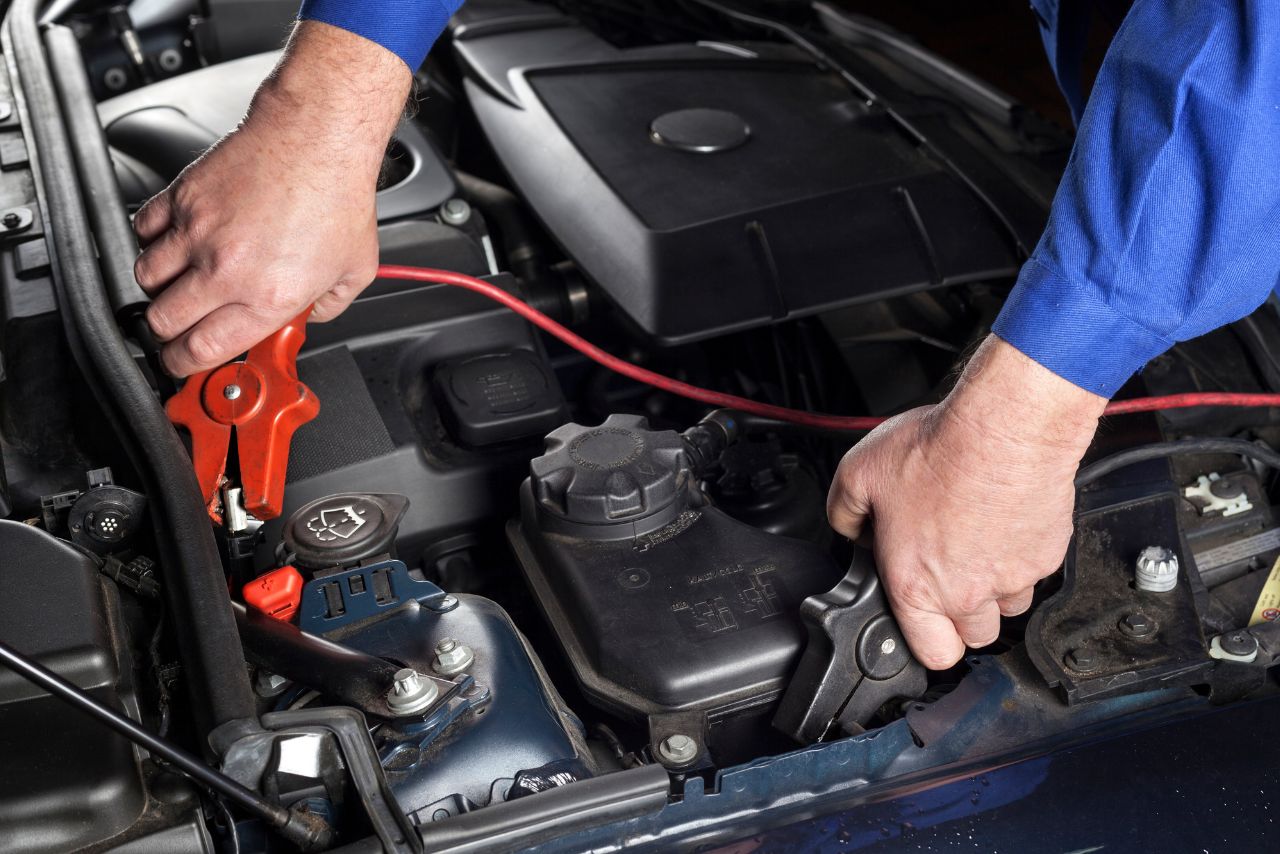

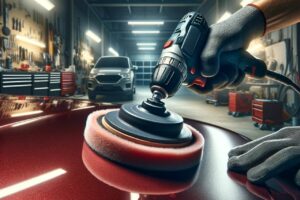
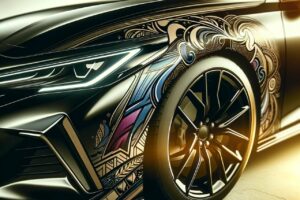
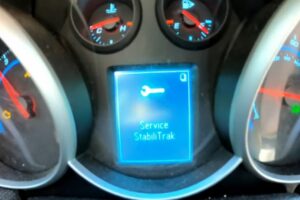

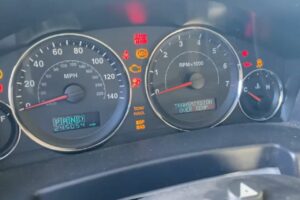




Leave a Reply